Photo
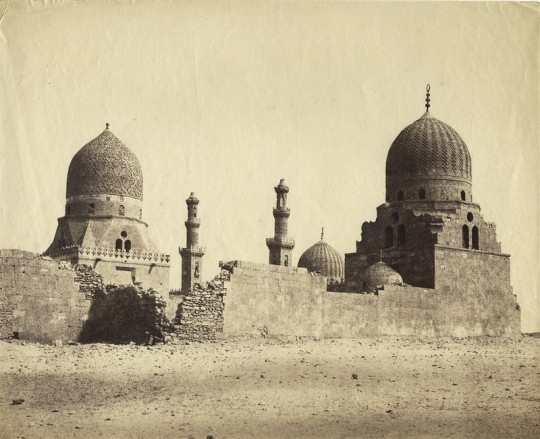
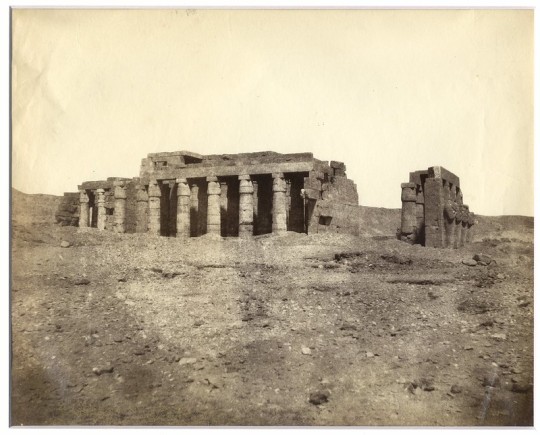

François Joseph Édouard de Campigneulles (1826-1879) was born in Douai in the North of France and became interested in photography shortly before traveling to the Middle East on a Grand Tour in 1853. After photographing through out that region for several years, he reportedly opened a photography studio in Cairo in 1859. From his travels throughout Egypt, Palestine, and Syria, he sent back to France eighty-six waxed paper negatives. Thirty-eight photographs of this voyage were exhibited for the first time in Paris at the 1859 Photographic Salon organized by the Société Française de Photographie (SFP). Historian Sylvie Aubenas suggests that he had "an apprenticeship with Gustave Le Gray due in part to the technical similarities in the extreme quality in composition, the fine details of his wax paper negatives and the slight shading of his albumen prints. Aubenas also suggested the influence of "the Scottish photographer James Graham, who was likewise a participant at the SFP in 1859.
.
François Joseph Édouard de Campigneulles - Tombeaux des Califes, le Caire, 1858, albumen print from a waxed paper negative, 10 in x 12.25 in, The Patrick Montgomery Collection, Object No. 2016.1057.
.
François Joseph Édouard de Campigneulles - Ramesseum, Luxor, 1858,
albumen print from a waxed paper negative, 10 in x 12.25 in, The Patrick Montgomery Collection, Object No. 2019.584.
.
François Joseph Édouard de Campigneulles - Temple of El-Karnak, Luxor, 1858, albumen print from a waxed paper negative, 9 1/2 in x 11 1/4 in, The Patrick Montgomery Collection, Object No. 2019.631.
.
#waxedpapernegative
#decampigneulles
#egyptianruins
#societefrancaisedephotigraphie
#historyofphotography
#photographyhistory
#notinnewhall
#19thcenturyphotography
#vintagephotography
#photohistory
0 notes
Photo


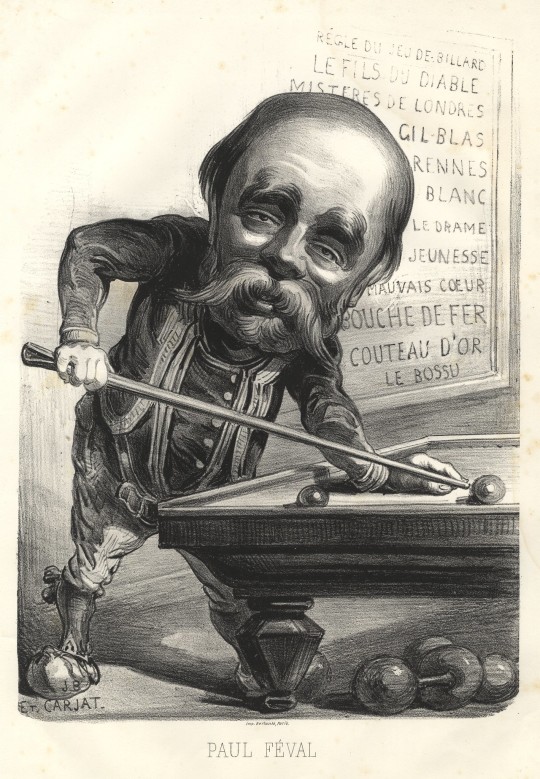

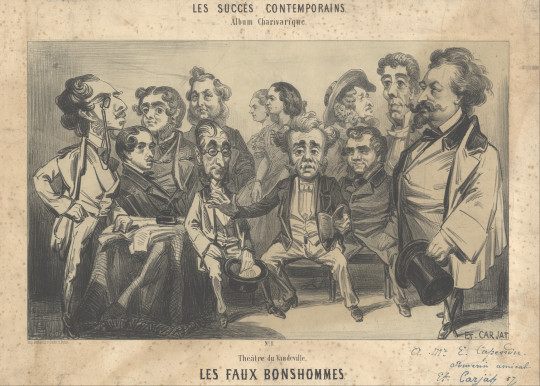
Etienne Carjat (1828-1906) is best known for his photographic portraits of important 19th century French cultural figures including Charles Baudelaire, Alexandre Dumas, Emile Zola, Victor Hugo and many others, which were later made famous by their publication as woodburytypes in the popular mid-1870s publication Galerie Contemporaine. His portraits, sans the typical decoration of pillars and drapery used by other photographers, captured the spirit of his subjects by their dramatic postures and expressions. But lesser known are the caricatures of some of the same personalities that he created for the magazine Le Diogene, which he co-founded in 1856, and the review Le Boulevard, which he founded in 1861. His incisive eye was developed through the making of these pencil caricatures and the radical simplification of line and gesture became a trademark that transferred to his portrait photographs.
.
#etiennecarjat
#galeriecontemporaine
#caricature
#historyofphotography
#photographyhistory
#notinnewhall
#19thcenturyphotography
#vintagephotography
#photohistory5h
0 notes
Photo

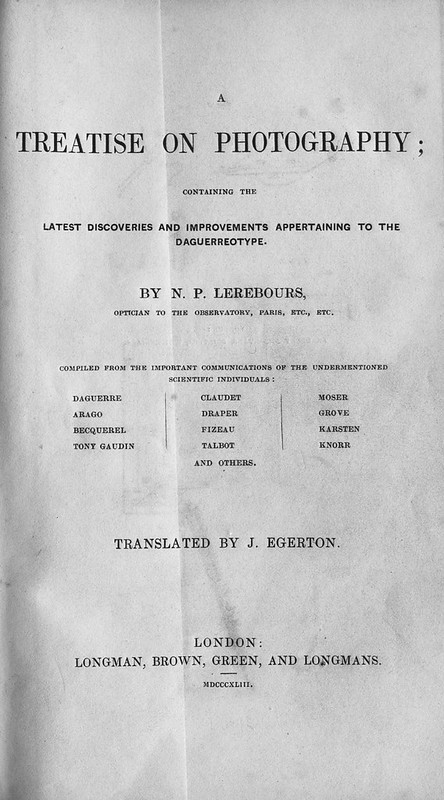


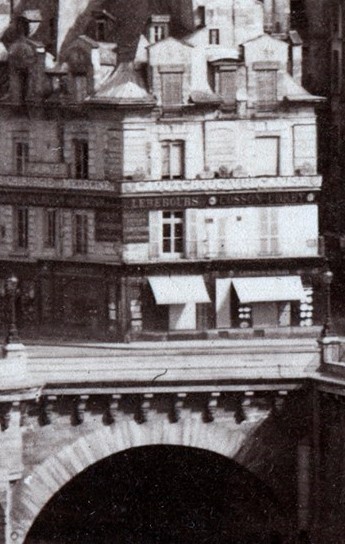
The firm of Lerebours et Secretan was originally founded in the late 18th century by Parisian optician Noel-Jean Lerebours (1761-1840). Following an apprenticeship, Lerebours opened his own shop at 69 Quai de l'Horloge in 1789 and then relocated it a few years later to Pont Neuf. He married in 1786 and took Noel Paymal (1807-1873) the son of an unmarried woman, under his wing. In 1836, Noel-Marie-Paymal added the surname “Lerebours”, and N.-J. Lerebours designated him as his sole heir. When Lerebours pere died in 1840, his adopted son continued the business and becoming an early expert on photography, produced camera lenses of very high quality and wrote several popular photography manuals. He is best known today for his publication Excursions Daguerriennes, portfolios of views of the world's monuments, based on daguerreotypes redrawn by hand as aquatint engravings. In 1845, N.P. Lerebours formed a partnership with Marc Secrétan, a Swiss mathematician and optical scientist who had recently moved to Paris to study astronomy. The partnership of Lerebours and Secrétan ended with Lerebours’ retirement at the end of 1854 but led by Secrétan and his heirs continued well into the twentieth century under a succession of owners.
.
#lerebours
#historyofphotography
#photographyhistory
#notinnewhall
#19thcenturyphotography
#vintagephotography
#photohistory
0 notes
Photo



Alphonse Louis Poitevin (1819 -1882) was a French chemist, photographer and civil engineer who discovered the light–sensitive properties of bichromated gelatin and invented both the photolithography and collotype processes. He has been described as "one of the great unheralded figures in photography". In the 1850s he discovered that gelatin, in combination with either potassium or ammonium bichromate, hardens in proportion to the amount of light that falls on it. This discovery was later used by numerous inventors such as Josef Albert, Joseph Wilson Swan, Paul Pretsch and Charles Nègre to develop subsequent photographic printing processes such as heliogravure, photogravure, collotype, autotype and carbon printing. This heliogravure, a reproduction of an engraving by Charles Emile Jacques and one of Poitevin’s earliest, has been reproduced in many early Histories of Photography including those by Figuier (1867), Davanne (1882), Eder, (1905) and Lecuyer (1945).
.
#alphonsepoitevin
#frenchchemist
#photolithograph
#historyofphotography
#photographyhistory
#notinnewhall
#19thcenturyphotography
#vintagephotography
#photohistory
0 notes
Photo


Dominique Roman (1824-1911) was a photographer from Arles, a member of the Societe Francaise d'Archeolgie, and a friend of Frederic Mistral. He earlier practiced several kinds of metallurgy, from goldsmithing to mirror making, which in turn contributed to his expertise in photographic chemistry. Although he was a prototypical local photographer, Roman garnered praise in Parisian photographic circles for his artisanal innovations in making paper negatives at a time when this process was quickly being replaced by glass negatives. Inspired by the Mission Heliographic and the work of Edouard Baldus, he published an album titled "Monuments du Midi de la France”. He participated in expositions at the SFP in 1861 and 1863, Marseilles in 1861, Paris in 1855 and 1867 and London in 1861. He was active in the local politics in Arles between 1871 and 1885.
#dominiqueroman
#arles
#saltedpaperprint
#waxedpapernegative
#historyofphotography
#photographyhistory
#notinnewhall
#19thcenturyphotography
#vintagephotography
#photohistory
0 notes
Photo

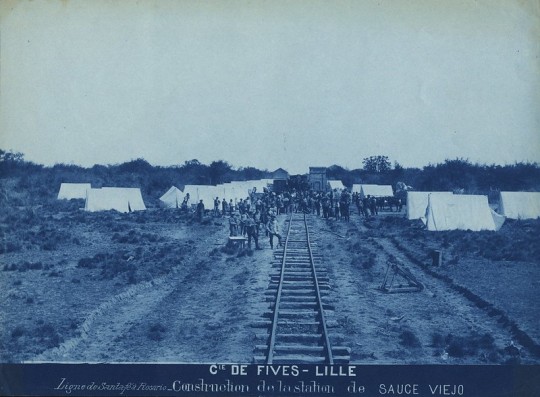
Georges Poulet (1848-1936), trained in France as an engineer, became assistant director of the French National Railway Authority. In 1889 he was sent to South America to build a railway from Santa Fé to Tucumán in the remote mountains of north-western Argentina. While there he also managed a 3000 hectare hacienda called San Jorge. Between 1890 and 1894 Poulet, also an amateur photographer, produced more than one hundred cyanotypes showing construction of the railway as well as scenes in the city and port of Santa Fé, rivers, villages, workers and local inhabitants. Poulet’s cyanotypes convey the full flavour of the pioneering spirit so characteristic of the nineteenth century. They also reveal a desire to record technological processes in an artistic way.
#george poulet
#cyanotype
#argentina
#railroad
#historyofphotography
#photographyhistory
#notinnewhall
#19thcenturyphotography
#vintagephotography
#photohistory2m
2 notes
·
View notes
Photo
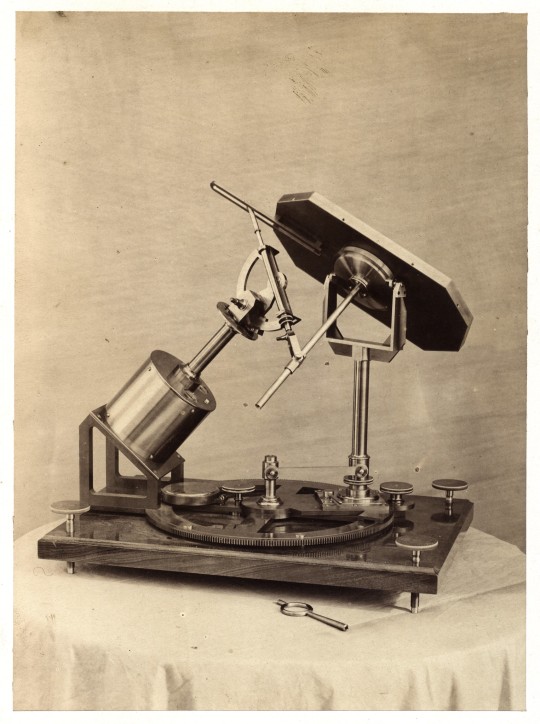

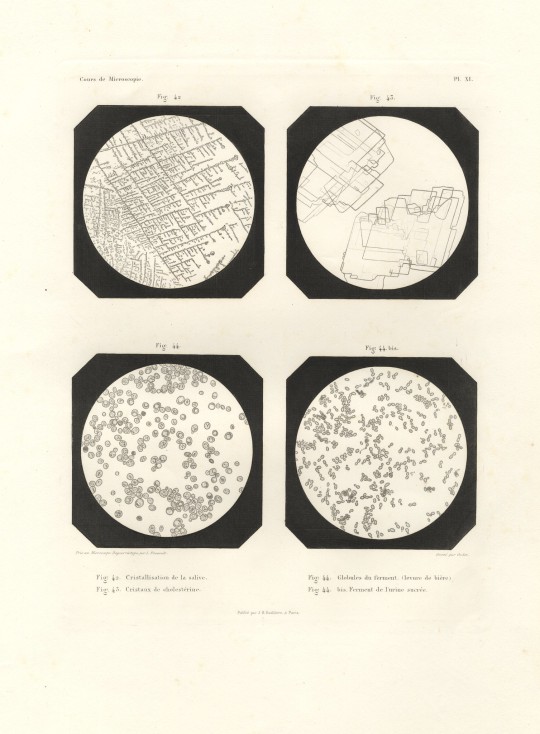
While not known as a photographer, French physicist Jean Bernard Léon Foucault (1819-1868) was involved in early efforts to use photography for scientific study. Foucault is best known for his creation of the Foucault pendulum, a device demonstrating the effect of the Earth's rotation. He also made an early measurement of the speed of light, discovered eddy currents, and is credited with naming the gyroscope. He began experimenting with daguerreotypes shortly after their announcement in 1839, and working with bacteriologist Alfred Donné, took some of the first daguerreotype microphotographs. When their attempts to make prints directly from the etched daguerreotype plates failed, the images were published as engravings in 1844. With Hippolyte Fizeau, a friend from his student days, he carried out a series of investigations on the characteristics of light. Together, they also worked on improving the sensitivity of daguerreotype plates and on August 2, 1845, they took the first daguerreotype image of the sun. In 1860 he traveled to Spain on behalf of the Observatory of Paris to photograph a total solar eclipse. This "small" heliostat (from helios, the Greek word meaning Sun, and stat, the root of stationary), designed by Foucault and built by the Duboscq workshop, was a device for following the course of the sun and could be used to provide a steady beam of light for indoor photography.
#leonfoucault
#daguerreotype
#hippolytefizeau
#alfreddonne
#heliostat
#historyofphotography
#photographyhistory
#notinnewhall
#19thcenturyphotography
#vintagephotography
#photohistory
0 notes
Photo

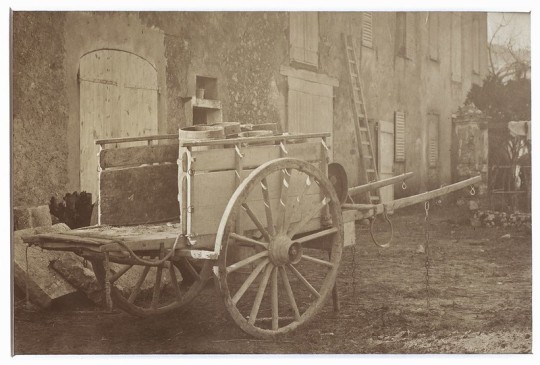
Luigi Lodoisch Crette (1823-1872) was born in Nice and first became active as a photographer in Rome on the via della Rocca during the early 1850s. He showed works in London in 1852 at the Society of Arts exhibition under the patronage of Antoine Claudet and at the 1855 International Exhibition in Paris. At some point he learned the wax paper negative process from Gustave Le Gray. Around 1858, he was back in Nice, where took this portrait of French novelist Alphonse Karr, met up again with Le Gray and traveled with him on his voyage around the Mediterranean in 1859-60 with Alexandre Dumas. In 1861 he took over the studio of photographer Luigi Montabone in Turin at Via della Rocca # 47/49 where he worked until the end of 1865. In 1866, he opened a studio in Rome, via Po, #39 and later returned to Turin where he spent the rest of his life.
.
Luigi Crette - Alphonse Karr, 1860, albumen print, 10 1/6 in x 7 3/4 in, The Patrick Montgomery Collection, Object No. 2018.488.
.
Luigi Crette - Farmyard, Nice, ca 1858, salted paper print from a waxed paper negative, 8 1/2 in x 6 in, The Patrick Montgomery Collection, Object No. 2017.822.
.
#luigicrette
#alphonsekarr
#saltedpaperprint
#waxedpapernegative
#historyofphotography
#photographyhistory
#notinnewhall
#19thcenturyphotography
#vintagephotography
#photohistory
0 notes
Photo



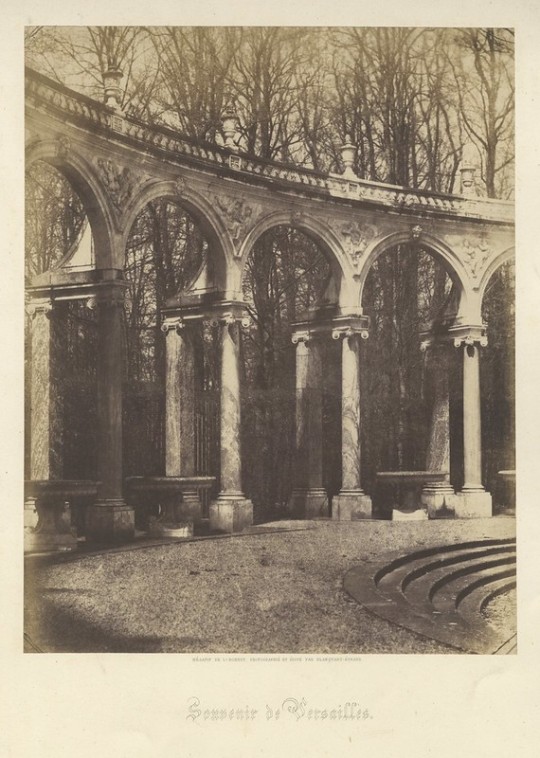
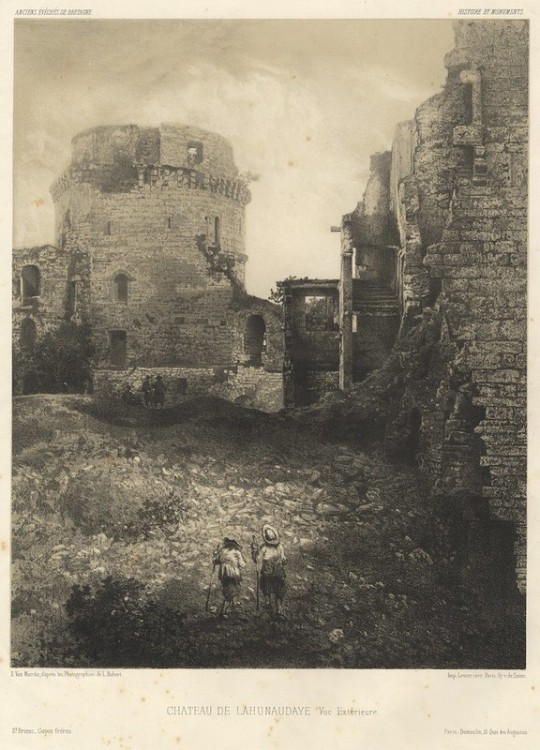
Louis-Rémy Robert (1810–1882) grew up at the royal porcelain factory at Sèvres where his father was the head of the glass-painting atelier, a position that Louis himself assumed at the age of twenty-two following his father’s death. In 1847, he was named head of the entire painting workshop. Around 1850 he took up paper photography. After Victor Regnault, an important chemist and pioneering photographer, became director of the factory in 1852, Robert’s photographic activity intensified, no doubt because the two men experimented together and encouraged each other’s work. Robert's oeuvre consists of portraits of his family and friends, still lifes of the products of the porcelain factory, a series of landscapes made in the nearby gardens of Versailles and Saint-Cloud, and architectural views made in Brittany and Normandy. In 1871 he became Director of the Manufacture of the Sèvres factory.
.
Louis-Rémy Robert - Still Life, Musée Céramique de Sèvres, 1855, salted paper print, 10 in x 12 9/16 in, The Patrick Montgomery Collection, Object No. 2021.246
.
Louis-Rémy Robert - Young Woman, Sevres Factory, ca 1854, albumen print from a collodion glass negative, 8 in x 5 1/3 in, The Patrick Montgomery Collection, Object No. 2014.802.
.
Louis-Rémy Robert - Detail de la Piece du Dragon, Bassin de Neptune, 1853, Blanquart Evrard process print, 12 1/2 in x 10 in, The Patrick Montgomery Collection, Object No. 2017.709.
.
Louis-Rémy Robert - Salle de Bal, Bosquet de la Colonnade, Versailles, 1853, Blanquart Evrard process print, 12 1/2 in x 10 in, The Patrick Montgomery Collection, Object No. 2016.1049.
.
Louis-Rémy Robert/Emile van Marcke - Vue Exterieure, Chateau de Lahunaudaye, ca 1855, lithograph after a photograph, 21 3/4 in x 14 1/2 in, The Patrick Montgomery Collection, Object No. 2016.536.
.
#historyofphotography
#photographyhistory
#notinnewhall
#19thcenturyphotography
#vintagephotography
#photohistory
#louisrobert
#sevresporcelain
#blanquartevrard
#saltedpaperprint
#albumenprint
#stilllifephotograph
10 notes
·
View notes
Photo




Adolphe Dallemagne (1811-1882) started out as a painter, having studied with Ingres, Cogniet and Monvoirsin. His output included river landscapes of the regions near Paris and the Auvergne and, after a trip through North Africa in 1863, watercolors with motifs from Oran and Algeria. A few years later he switched to photography and opened a studio at 9, avenue de Ségur in Paris, specializing in portraits. His best known work was a series of photographs of contemporary artists, published as Galerie des Artistes Contemporains, which appeared in different picture frames in the styles of Louis XIV, Louis XV and Louis XVI, complete with theatrical velvet curtains.
.
Adolphe Dallemagne - Étienne Montagny, ca 1866, albumen print, 6 1/2 in x 9 in, The Patrick Montgomery Collection, Object No.2016.039.
.
Adolphe Dallemagne - Léon Belly, ca 1866, albumen print, 6 1/2 in x 9 in, The Patrick Montgomery Collection, Object No. 2020.332.
.
Adolphe Dallemagne - Theordore Rousseau, ca 1866, albumen print, 6 1/2 in x 9 in, The Patrick Montgomery Collection,Object No. 2016.538.
.
Adolphe Dallemagne - Young Boy With Books, ca 1866, albumen print, 2 1/4 in x 4 in, The Patrick Montgomery Collection, No.2016.123.
.
#adolphedallemagne
#theodorerousseau
#portrait photograph
#historyofphotography
#photographyhistory
#notinnewhall
#19thcenturyphotography
#vintagephotography
#photohistory
0 notes
Photo
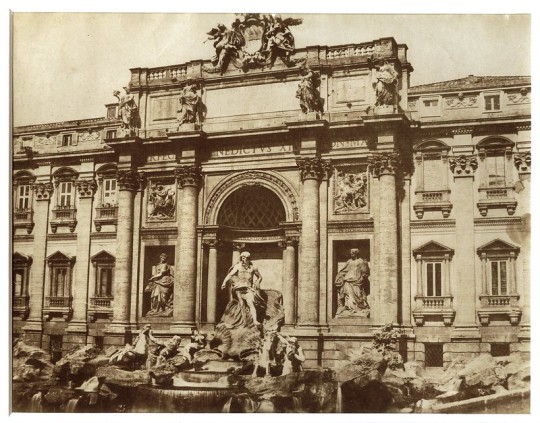

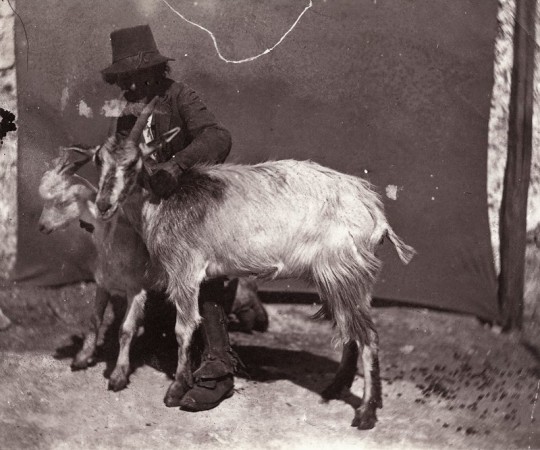

Giacomo Caneva (1813-1865), born in Padua, trained at the Venetian Academy as a vedutista, a painter of perspective city views. He moved to Rome in 1838 and soon became part of the circle of Italian, French, and British artists who exc Giacomo Caneva (1813-1865), born in Padua, was trained at the Accademia di Belle Arti in Venice as a vedutista, a painter of perspective city views. He moved to Rome in 1838 and became part of the circle of Italian, French, and British artists who exchanged ideas about their photographic work at informal meetings at the Caffè Greco, in the Piazza di Spagna. As early as 1845, he appeared on the café’s ledger as “Painter-Photographer,” having learned the daguerreotype process before mastering paper negatives. Caneva’s views of Roman monuments, classic sculpture and figure studies of Italian peasants catered to the tastes of the artists that lived near the French Academy at the Villa Medici. In 1859 he traveled to China and India in the employ of an Italian silk manufacturer to document the search for new sources of silkworms.
Giacomo Caneva - Fontana di Trevi, Roma, ca 1850, salted paper print from a calotype negative, 7 7/8 in x 10 in, The Patrick Montgomery Collection, Object No. 2018.0034.
Giacomo Caneva - Statua de Agrippina, ca 1850, salted paper print from a calotype negative, 8 5/8 in x 7 ½ in, The Patrick Montgomery Collection, Object No. 2015.486.
Giacomo Caneva - Goatherd with Goats, ca 1856, albumen print from a collodion negative, 4 1/8 in x 5 in, The Patrick Montgomery Collection, Object No. 2015.485.
Giacomo Caneva - Busto di Augusta Giovane ai Musei Vaticani, ca 1850, salted paper print from a calotype negative, 7 in x 4 1/3 in, The Patrick Montgomery Collection, Object No. 2018.788
#giacomocaneva
#caffegreco
#calotype
#historyofphotography
#photographyhistory
#notinnewhall
#19thcenturyphotography
#vintagephotography
#photohistory
0 notes
Photo
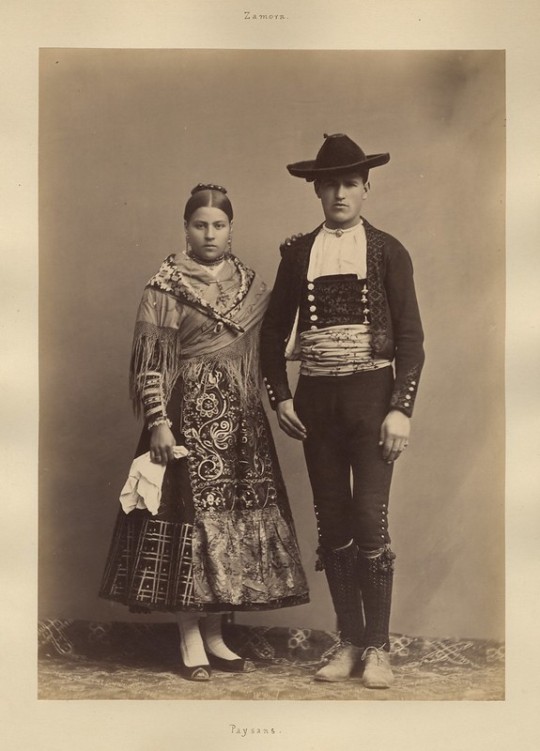

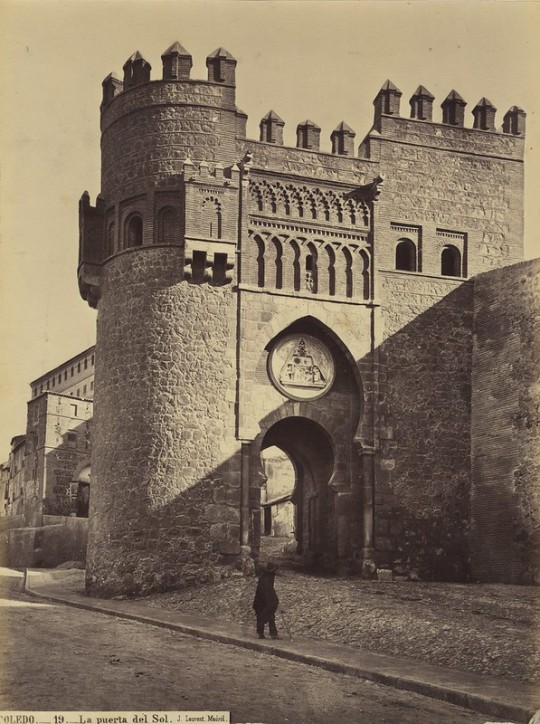


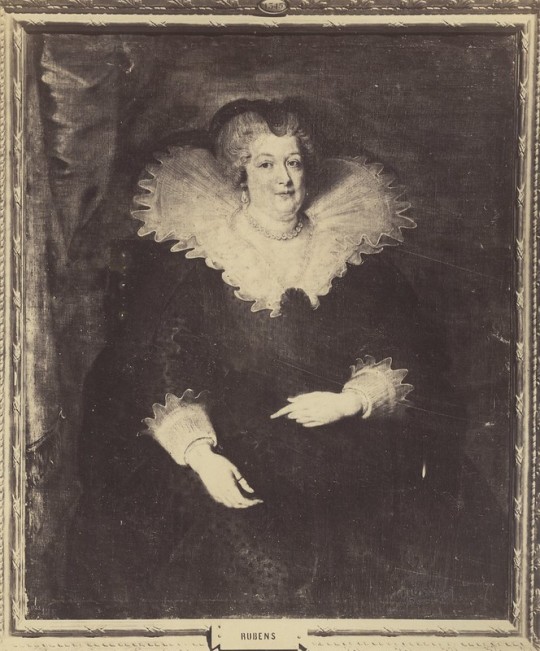
Jean Laurent or, in Spanish, Juan Laurent (1816 -1886) was a French photographer from Garchizy in the Burgundy region who moved to Spain in 1843 and settled in Madrid. He worked as a box and paper maker, creating luxurious boxes for pastries and marbled paper for book bindings. In 1855, having done work coloring photographs, he became interested in photography, and soon opened a portrait studio on the Carrera de San Jerónimo, near the Congress of Deputies. He established himself quickly and from 1861 until 1868 he was able to use the title "Photographer of her Majesty the Queen". He took a vast variety of subjects including city views, architecture, historic monuments, old master paintings and local inhabitants of all social classes. He also opened a store in Paris, devoted exclusively to selling his photographs of Spain and Portugal. In 1866, together with the Spanish photographer, José Martínez Sánchez (1808–1874), he patented "Leptographic Paper" one of the first collodion printing-out papers available commercially.
Juan Laurent - Paysans, Zamora, ca 1863, albumen print, 9 1/2 in x 13 1/4 in, The Patrick Montgomery Collection, Object No. 2014.269.
Juan Laurent - Demi-armure de l'infant Ferdinand, Armeria de Madrid, 1868, albumen print, 10 in x 13 in, The Patrick Montgomery Collection, Object No. 2009.092.
Juan Laurent - La Puerta del Sol, Toledo, ca 1868, albumen print, 9 1/2 in x 13 1/4 In, The Patrick Montgomery Collection, Object No. 2014.479.
Juan Laurent - Ventana de la Sala de las Dos Hermanas, Alhambra, Granada, 1871, albumen print, 9 3/4 in x 11 1/2 in, The Patrick Montgomery Collection, Object No. 2012.414.
Juan Laurent - Picador, ca 1866, leptographic print, 4in x 6 in, The Patrick Montgomery Collection, Object No. 2014.317.
Juan Laurent - Portrait de Marie de Medicis by Peter Paul Rubens, 1865, albumen print, 8 1/8 in x 9 3/8 in, The Patrick Montgomery Collection, Object No. 2015.387.
.#juanlaurent
#jeanlaurent
#spanish
#historyofphotography
#photographyhistory
#notinnewhall
#19thcenturyphotography
#vintagephotography
#photohistory
2 notes
·
View notes
Photo
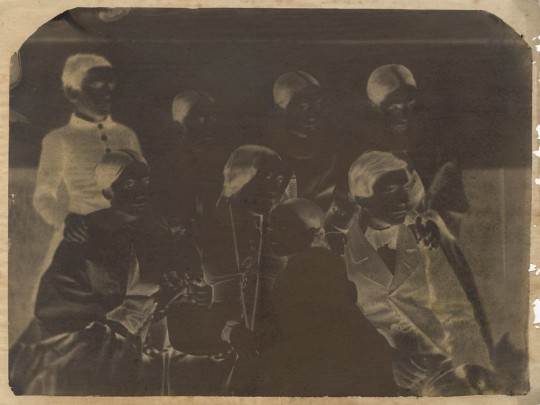

Jean-Baptiste Frénet (1814-1889) was a French painter, sculptor, photographer and politician based in Lyon. The son of a manufacturer of silk cloth, Frenetic learned the artistic side of the silk trade from his father but attended the School of Fine Arts in Lyon, studying painting and life drawing. In 1835 he moved to Paris to continue his training in the studio of Jean-Auguste-Dominique Ingres and then followed Ingres to Italy where he had become Director of the French Academy in Rome. Back in Lyon, Frénet made his first public exhibition in 1837 and became a recognized member of the School of Lyon, but failing to win any prizes at the Paris Salon in 1841, he relocated to the nearby village of Charly. He painted frescoes and designed stained glass for the Saint-Louis-de-la-Guillotière church there and after the Revolution of 1848, was elected Mayor of Charly. He worked on a large fresco project for the Church of St. Martin in Ainay, but moisture caused his work to deteriorate and his sponsors refused to pay. Embittered, Frénet gave up painting entirely. Around 1850 he met some photography pioneers in Lyon, and became passionate about this new medium, eventually opening a professional practice of photography in 1866 in Lyon. His photographic work was unknown until offered at auction in 2000 where much of it was acquired by the Musée d'Orsay.
Jean-Baptiste Frénet - Famille de Huit Personnes, ca 1855, paper negative, 7 1/8 in x 9 1/4 in, The Patrick Montgomery Collection, Object No. 2021.126.
Jean-Baptiste Frénet - Famille de Huit Personnes, ca 1855, salted paper print, 7 1/8 in x 9 1/4 in, The Patrick Montgomery Collection, Object No. 2021.127.
#jeanbaptistefrenet
#papernegative
#calotype
#lyon
#historyofphotography
#photographyhistory
#notinnewhall
#19thcenturyphotography
#vintagephotography
#photohistory
0 notes
Photo

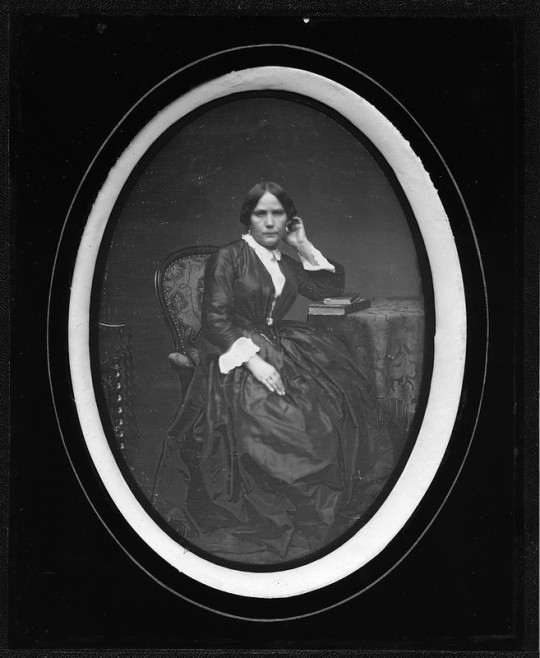
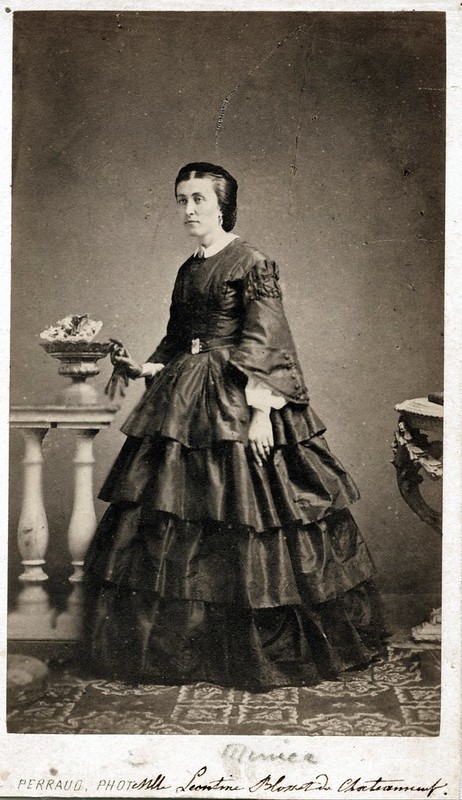
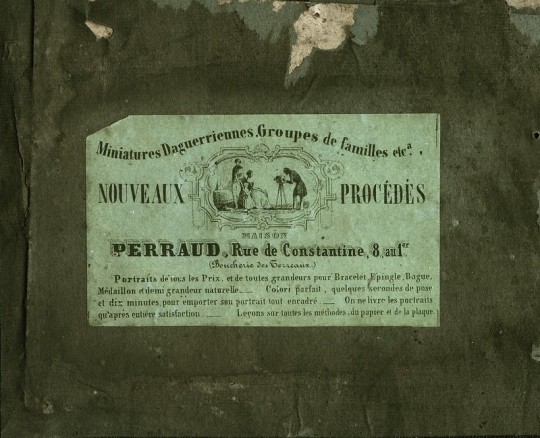

François (Philbert) Perraud (1814 - after 1863) was reportedly the son of an innkeeper in Mâcon (Saône-et-Loire) and his second wife Marie Lavenir, seventeen years younger, with whom he had two children. He died in 1831 leaving his widow in charge of two teenagers. Francois soon left his birthplace for Paris, where in 1839, he became a "student of Daguerre". During the 1840s, he practiced the daguerreotype first in Toulon but then in Greece, Turkey and Italy. Landing In Rome in 1844 he stayed for eighteen months as his portrait of the Pius IX had aroused envy among all the cardinals to have their own. Back in France, he moved to Lyon, where he practiced through the 1850s and then to Marseille. His sister, Maria Chambefort, studied under him in Lyon, and became a traveling daguerreotypist in Saône-et-Loire. In a biography of Perraud, the authors named him Philibert instead of François and gave his date of birth in Mâcon as August 8, 1815. A Philibert Perraud was born that day in Mâcon, but was the natural child of a domestic worker who abandoned him.
François (Philibert) Perraud - Seated Man, ca 1845, daguerreotype, 4 1/2 in x 3 1/2 in, The Patrick Montgomery Collection, Object No. 2016.705. Signed in the plate by Perraud.
François (Philibert) Perraud - Elegant Frenchwoman, ca 1850, daguerreotype, 5 7/8 in x 4 in, The Patrick Montgomery Collection, Object No. 2016.174
François (Philbert) Perraud- Léontine de Châteauneuf, ca 1860, albumen print, 2 1/4 in x 4 in, The Patrick Montgomery Collection, Object No. 2016.709a.
François (Philbert) Perraud - Studio Label, ca 1845, letterpress, 4 1/2 in x 3 1/2 in, The Patrick Montgomery Collection, Object No. 2016.705c..
François (Philbert) Perraud- CDV Back, ca 1860, letterpress, 2 1/4 in x 4 in, The Patrick Montgomery Collection, Object No. 2016.709b.
#daguerreotype
#francoisperraud
#mariachambefort
#historyofphotography
#photographyhistory
#notinnewhall
#19thcenturyphotography
#vintagephotography
#photohistoryLikeCommentShare
0 notes
Photo
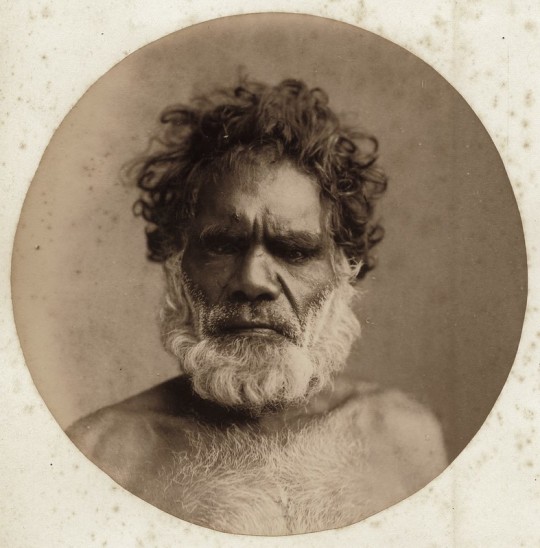
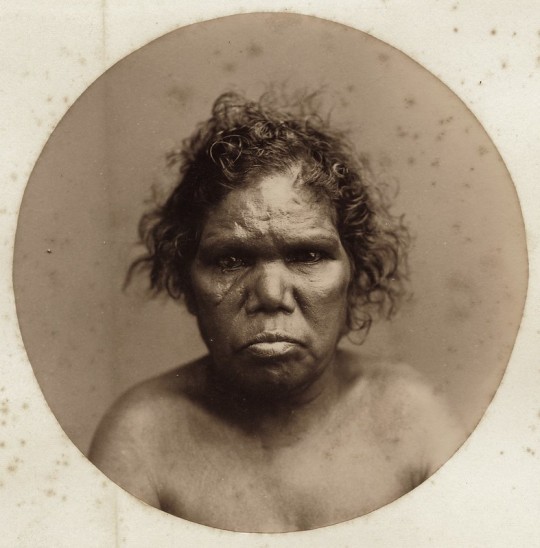

Henry King (1855-1923) was an English-born Australian photographer, especially known for his early studies of Australian Aboriginal people. King was born in England, but his family emigrated to Australia shortly after his birth, arriving in December, 1856. He began working as a photographer in the Sydney studio of J. Hubert Newman and by 1880 had opened his owned studio with a partner, William Slade. Between 1889 and 1894 he travelled widely in New South Wales and Queensland, making many photographic studies of Aboriginal Australians which he exhibited at the World Columbian Exposition in Chicago in 1893, receiving a bronze medal. In later years he turned to landscape photography, using the dry-plate technique, and produced a great many scenic views of Sydney. After King's death, many of his glass negatives were purchased by J. R. Tyrrell. The Tyrrell Collection, which includes works by a number of Australian photographers, is now held by the Powerhouse Museum in Sydney.
Henry King - Australian Aboriginal Man, ca 1890, albumen print5 1/2 in x 5 1/2 in, The Patrick Montgomery Collection, Object No. 2017.384.
Henry King - Australian Aboriginal Woman, ca 1890, albumen print5 1/2 in x 5 1/2 in, The Patrick Montgomery Collection, Object No. 2017.383.
Henry King - Fijians and Solomon Islanders, ca 1890, albumen print,5 7/8 in x 8 15/16 in, The Patrick Montgomery Collection, Object No. 2021.151.
.#henryking#aboriginie #australia#portrait#fiji#solomonislands#historyofphotography#photographyhistory #notinnewhall #19thcenturyphotography #vintagephotography#photohistory
0 notes
Video
Edward Steichen (1879-1973) was accomplished and well regarded by the early 1920s as a painter, artistic photographer and co-conspirator with Alfred Stieglitz in the founding of the Photo-Secession and Camera Work magazine, but after a bad and expensive divorce and growing doubts about his abilities “with the brush”, he needed something to renew his energies. The offer came from publisher Condé Nast to become chief photographer for Vanity Fair magazine, at the extraordinary salary of $35,000 (about $500,000 in today’s dollars). He would also add fashion work for Vogue, taking the place of the famous Baron Adolphe de Meyer who had been lured to Harpers Bazaar. He would remain at Condé Nast until 1938 and through his celebrity portraits and meticulous fashion pictures would become as famous as many of his subjects.
.
A Visit to the Studio of Edward Steichen (1935), U M & M Pictorial, 16mm film, The Patrick Montgomery Collection, Object No TFA-397A.
#edwardsteichen
#edouardsteichen
#fashionphotography
#vogue
#historyofphotography
#photographyhistory
#notinnewhall
#20thcenturyphotography
#vintagephotography
#photohistory4m
2 notes
·
View notes
Photo
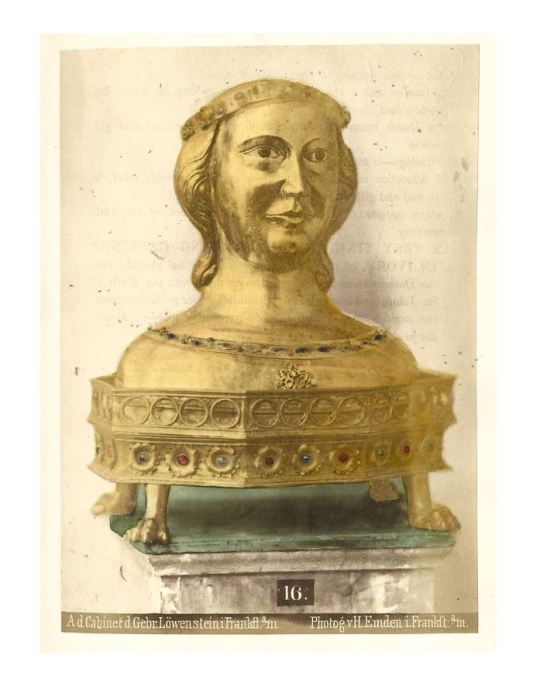




Published by the London auction house of Christie, Manson & Woods in 1860, the Catalogue of the Celebrated Collection of Works of Art and Vertu, known as "The Vienna Museum”, was illustrated with 35 salted paper prints from albumen on glass negatives made by German engraver and photographer Hermann Emden (1815-1875). This collection was begun in the sixteenth century by the Emperor Maximilian I, increased by the Emperor Rudolph II, and in 1782 was sold to the Chevalier van Schönfeld. Schönfeld opened it to the public under the title "The Technological Museum of Vienna. According to The Truthful Lense, No. 34, this is the first auction sale catalogue illustrated with original photographs.
.
Hermann Emden - Bust of St Ursula, salted paper print, 4 7/16 in x 6 1/4 in, The Patrick Montgomery Collection, Object No. 2021.076.
.
Hermann Emden - Silver Tankards and Gothic Chalice, salted paper print, 7 1/4 in x 5 1/8 in, The Patrick Montgomery Collection, Object No. 2021.076
.
Hermann Emden - Tycho Brahe's Astronomical Instrument, 1860, salted paper print, 4 3/4 in x 6 in, The Patrick Montgomery Collection, Object No. 2021.076.
.
Hermann Emden - Busts and Group in Boxwood, 1860, salted paper print, 5 1/4 in x 6 1/16 in, The Patrick Montgomery Collection, Object No. 2021.076.
.
Christie, Manson and Woods - Catalogue of the Celebrated Collection of Works of Art and Vertu, Known as "The Vienna Museum", 1860, auction catalog, 6 5/8 in x 10 The Patrick Montgomery Collection, Object No. 2021.076.
.
#viennamuseum
#christies
#auction
#saltedpaperprint
#historyofphotography
#photographyhistory
#notinnewhall
#19thcenturyphotography
#vintagephotography
#photohistory
0 notes